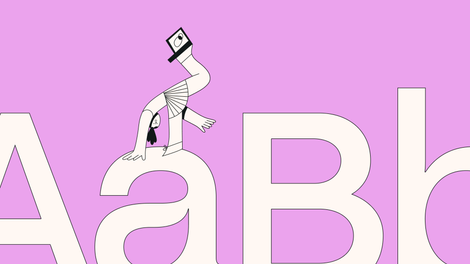Quick question: Do you often want to create something but struggle to find inspiration for what you want to create?
We know the feeling.
When you sit down to draw with your pens or colored pencils, you need to be inspired by what you’re doing and challenged enough for your skill level.
To get the creative juices flowing, we’ve put together a giant list of fun ideas. Our list of drawing prompts combines a variety of objects and scenes from everyday life and some abstract ideas to activate the imagination.
Rather than relying on an intensive stack of books on the drawing process, we thought we'd provide you with the core aspects of an amazing drawing with plenty of fantastic visual sources of inspiration.
Whether drawing in a physical medium and putting pencil to paper or using a vector drawing tool like Linearity Curve (formerly Vectornator), you'll find a source of inspiration here.
Jumpstart your ideas with Linearity Curve
Take your designs to the next level.
6 reasons why drawing is good for you
Any form of art activity is proven to be beneficial for our well-being.
Expressing art ideas helps our brains develop, and it balances our nervous systems. Humans are creative by nature, so we need to express ourselves in this way.
The six primary benefits of drawing include:
- Therapeutic and meditative: Drawing improves your mood. It helps you become present in the moment and allows you to reflect on yourself and your surroundings. Appreciating the beauty of nature, quieting your mind, and expressing your emotions result in a calmer, happier disposition.
- Unlocks creativity: Drawing unlocks the part of your brain responsible for innovation and problem-solving. It exercises your ability to think differently and gets creative juices flowing. We love Sunni Brown’s Ted Talk on the life-changing power of doodling to learn more about this fascinating subject.
- Improves communication skills: Drawing is a visual language not limited to straight lines. That's why it's good to try drawing exercises where you have to visually communicate something abstract, like "draw what is true to you." This pushes your fundamental skills for visual communication and subsequently improves your overall communication skills beyond drawing techniques.
- Enhances memory: Drawing can be an effective tool for improving your memory. Studies have shown that doodling and sketching can help you remember information better than simply reading or hearing it. This is because drawing engages multiple areas of your brain simultaneously, creating a more robust neural network for memory recall.
- Boosts confidence: Drawing is a skill. Like any skill, it improves with practice. Seeing your skills develop and improve on your drawing journey can significantly boost your self-confidence and self-esteem.
- Encourages observation skills: When drawing, you need to closely observe your subject, whether it's a live model, an object, or a landscape. This practice can hone your observation skills, leading to a heightened sense of awareness and attention to detail that can be beneficial in many areas of life.
Why is drawing so hard, though?
Drawing is a difficult skill to master.
Whether you’re taking it on as a new skill or improving the drawing skills you already possess, growth is always challenging. When you haven’t practiced drawing enough, you'll struggle to aptly portray the image you set out to draw.
Remember to choose the right drawing exercise for your skill level. If you choose something too difficult, you may become frustrated and disheartened. If you choose something too easy, you'll get bored and hinder your advancement.
Still, starting with a few basic drawing ideas never hurts. Try looking at pictures of everyday things like cute animals or a teapot and begin practicing basic drawing methods.
It’s important not to judge your ability and talent based on what simply comes down to lack of practice.
Improving any creative skill takes time and iteration. Persevere to the point where you make that breakthrough and suddenly find yourself producing pieces of a higher quality and accuracy than before.
Coming up with creative drawing ideas to keep the practice consistent can also be challenging. That’s why we’ve created the list below: so you’re never short of ideas for your next piece of art or design. Don’t let a lack of ideas be why you don’t practice drawing techniques.
If you're feeling completely uninspired, or even burnt out, there may be a few reasons for this:
- Stress
- Not challenging yourself
- Limiting your knowledge
- Not taking notes and compiling ideas
- You aren’t surrounded by interesting things and people
- Tiredness
People embarking on developing a creative skill often find it too challenging and give up or slack off because they haven’t committed to making a habit of it.
So take care of your biochemical state, stay inspired, and make a habit of practicing creativity.
How to improve your drawing skills
Practicing fun drawing ideas is just the tip of the iceberg regarding what you can do to improve your creativity skills.
There are certain exercises you can do specifically for drawing that are excellent for improving your overall creativity. We’ve listed some suggestions below:
Drawing tips
- First and foremost, tap into your creative energy by ensuring your nervous system is balanced. This means taking care of yourself and ensuring you're well-rested and not overly stressed. Engaging in healthy activities that make you feel good (such as hiking, baking, or playing board games) is essential for developing your creativity.
- Practice drawing perspective. This is one of the foundational drawing skills that help you portray subjects realistically. You can practice perspective by choosing any subject, from a room to a landscape or an object, and drawing it from different angles. You can create drawing grids to help you understand how perspective works.
- Learn how to sketch on paper. Sketching objects, buildings, and people under various light sources will improve your fundamental drawing abilities.
- Make use of drawing tutorials online. The internet is a vast landscape full of tutorials. You can find plenty of free drawing tutorials on Linearity Academy, YouTube, and online courses. Skillshare is an excellent platform for building your creative skills. There are plenty of drawing tutorials, from creating a convincing outer space scene to bringing a comic book character to life and even mastering everyday objects.
- Practice creating digital art. Many artistic forms can be emulated on digital drawing surfaces such as computers, tablets, or drawing pads. With powerful digital tools for drawing, such as Linearity Curve (formerly Vectornator), you can unleash your creativity without limitations. For example, you can change your digital drawing to greyscale to create a pencil or charcoal look.
- Look for #drawinghacks on social media. TikTok, Instagram, and Pinterest are inspiring creative platforms where you can find drawing ideas.
- Follow your favorite artists on social media to stay inspired.
Drawing courses
Investing in an educational course is always good if you’re committed to learning something.
You can scout your local area for art teachers and institutions offering in-person courses or opt for an online one. Check out these courses:
- Linearity Academy on YouTube
- The Ultimate Drawing Course: Beginner to Advanced on Udemy
- Drawing Courses on LinkedIn Learning
Ready to
learn something
new?
Check out our list of
great design courses online.
An online drawing course will list the basic tools you need to complete it, so make sure you have everything you need first. We recommend taking courses from different mentors and experimenting with various mediums. There's a course for every budget.
Drawing challenges
Have you tried following a few design challenges? They can be quite motivating when you want to improve and stay inspired. Participating in or setting up drawing challenges for yourself will ensure you’re constantly pushing your skills to the next level.
Commit to drawing exercises once a week that challenge your skills and develop popular drawing techniques, such as blind contour drawing. You can also search for and participate in art competitions.
Try drawing complex subject matter, like hair underwater, an intricate mechanical object, or your favorite dishes. Not only will this challenge your assumptions about how things look, but it'll also improve your observational skills.
Drawing books
If your budget allows (yes, we know they're expensive), buy a design or drawing book now and again to help with ideas, learning, and inspiration. Some of the most recommended drawing books you might want to check out are:
- Dover Anatomy For Artists (1970) by Reginald Marsh
- Perspective Made Easy (1999) by Ernest R. Norling
- The Sketchbook of Loish: Art in Progress (2018) by Lois Van BaarleSketching From The Imagination: Creatures and Monsters (2019) by 3dtotal Publishing

Drawing from references vs your imagination
So, do you copy reference images or come up with your own original idea for drawings?
If you’re a beginner, drawing from a reference helps you learn how things from reality transfer onto a page. It helps you analyze proportions, perspective, and light. However, you mustn't become overdependent on reference images and spend your time trying to copy other artists.
When you're ready to create original artwork, you can also collect various references, such as photos and objects, to combine into one drawing. You can draw from your own photographs as well.
There's another route: drawing from your imagination, in which case you'll focus particularly on developing this skill using a few drawing materials.
Find your happy (drawing) medium
If you commit to improving your skills, you’ll want to experiment and work with a medium that inspires you.
There are a plethora of drawing implements besides the traditional graphite pencil that you can make drawing marks with. A creative idea for your drawing project or exercise is one thing, but you need a suitable drawing instrument to bring it to life.
You can change between drawing mediums, mix different mediums, or commit to mastering one medium if that suits you. Colorful crayon marks bring a sense of youthful playfulness to your artwork, whereas the even black lines of fine liners convey the preciseness of technical drawing.
Apply your medium to drawing paper or any other surface that can hold your image. A thicker paper will have a coarse texture and will also wrinkle less when you mix drawing with painting.
It’s always good to experiment.
This step is more important than you might imagine. You may create work you dislike when drawing in graphite pencil but then discover you have a unique style when using charcoal.
Types of drawing mediums include:
- Charcoal
- Oil pastel
- Soft pastel
- Graphite pencil
- Ink
- Color pencil
- Chalk
- Digital (vector or raster)
- Marker
- Ballpoint pen
- Watercolor pencil
Drawing ideas to keep you busy for the rest of your life
Finally, we’ve made it to the good stuff—the enormous list of drawing ideas.
How to use this drawing guide:
- The drawing ideas have been broken down into different sections. We've included real-life drawing ideas, mythical illustrations, and abstract ideas to challenge your imagination and hand.
- Plus, we’ve thrown in some ideas for kids if you have a class or children you'll be drawing with.
- There are plenty of amusing drawing ideas here; some might sound boring or difficult, but they're good challenges for your skill.
- We’ve chosen these ideas to give you the perfect mix of fun, inspirational, and challenging. You can choose to use the list in any way you like.
Section 1: Drawing the human form
Learning to capture the human figure is fundamental to drawing, and nothing quite reveals human emotion as a portrait drawing does.
Anatomy drawing teaches you to illustrate proportion and perspective with simple shapes. Focusing on the human form is an excellent idea if you’re interested in drawing as realistically as possible.
You can draw particular areas of the body, bodies in motion, facial expressions, clothing, and body proportions. The art of figure drawing never gets old—every person is uniquely beautiful.
- Hand Gestures: Drawing hands is notoriously difficult, so gesture drawings are fantastic for challenging your skills. You can draw your own hands, a photo, or find images online.
- Self-portrait: Creating a self-portrait is something every artist should do. You can take a photograph or try to do it from memory.
- Your family and friends: Why look elsewhere when you're surrounded by people you love spending time with? Not only will your next of kin treasure a drawing you did of them, but you may also see new aspects of their bodies and personalities that you hadn't noticed before.
- A caricature of yourself: This requires imagination and is a great overall creativity challenge. You can make it as detailed or silly as you like. Look at some other caricatures for inspiration before you begin.
- Side profile: Drawing the side profile of a face teaches you another aspect of drawing faces and helps hone your perspective skills.
- A nude figure: Drawing nude figures is one of the foundational drawing exercises taught in art because it teaches anatomy and perspective. You can try to find a live figure drawing class in your local area, look on Pinterest for drawing inspiration, or find resources in an art book or online art academy.
- Eyes: These are the perfect drawing challenge because they are difficult to draw, especially trying to draw a pair of eyes to look the same. Drawing eyes is the ideal challenge for shading techniques, so if that’s something you’re looking to focus on, look no further.
- An aged face: This is another more advanced challenge, as drawing aged faces requires more skill (and a lot of shading). It’s an excellent exercise for developing your realistic drawing skills.
- A dancing form: This will help you learn how to convey a sense of movement. It’s also the perfect exercise to hone skills around the proportions of a human body.
- An emotive expression: Learning how to visually communicate emotion is an important part of developing drawing skills. You can choose a reference of a face that’s hyper-expressive with laughter, tears, anger, or surprise.
- People in conversation: This is an excellent challenge that combines skills in portraying movement, gesture, and emotion. It'll teach you how to bring life to a drawing with multiple figures.
- A fashion illustration: You can choose to illustrate an outfit you own, something from your imagination, or simply copy an illustration from a fashion designer that you find online. This is an enjoyable challenge that also allows you to experiment with different drawing styles.
Section 2: Drawing animals
Most people love animals and would love drawing animals. Besides capturing the human body, anatomical drawing also includes illustrating animal bodies and gestures.
Trying your hand at drawing various species will help you become comfortable depicting different proportions and textures. Household animals, in particular, allow artists to capture something more profound than just the animal’s body.
Maybe there's something about a cat, dog, or bird that you find adorable, and you want to try and portray their personality and cuteness in the drawing.
Conveying the love you feel for the animal to the viewer is crucial for learning to communicate well visually.
- Cats: These creatures are fascinating drawing subjects. And this is not only for cat lovers—feline bodies can make contortions that can be quite difficult to illustrate in a drawing. And depicting cat fur is an excellent shading exercise. Check out our tutorial on how to draw a cat.
- Dogs: There are so many different breeds of dogs, and we're sure your dog is one in a million. Drawing some of the various breeds will keep you busy for a while and is a good opportunity to develop your skills with texture and pattern. Drawing a poodle, a husky, an Afghan hound, and a “pavement special” will help you learn how to portray dogs using different shapes and textures. Check out our tutorial on how to draw a dog.
- Fish: Another excellent opportunity to play with textures and patterns, plus drawing a fish in its underwater context will allow you to observe how light and shade refracts in water. Here's our step-by-step tutorial on how to draw a fish.
- Koala bears: They’re adorable, and apparently quite smelly. You might not have the opportunity to smell one in real life, but you can rely on reference pictures from books or the internet to capture its furry form.
- Primates: If you study primates closely, you’ll notice their faces are highly expressive. These animals make for an excellent drawing challenge because of the lines, texture, and details in their faces and hands. You can also have fun and humanize your primate drawing subject by adding clothes and accessories. Learn how to draw a monkey.
- Birds: You can play with the color of parrots and flamingos and challenge yourself to depict movement by drawing birds in flight.
- Insects: The most diverse species on earth. You could spend a lifetime studying these creatures and capturing their details in various drawing mediums.
- Your pets: Because you know your pet, you can capture their personality traits in your drawing. If you can't get your pet to pose long enough, work from a reference photo that captures them in a way that inspires you.
- Dinosaurs: These ancient creatures can be fun to draw, and there are many kinds to choose from. It’s also a good challenge for playing with unusual textures and proportions.
- Elephants: These beautiful creatures have thick, textured skin that makes for a challenging exercise in shading.
- Snakes: Get creative with this one and draw a pet snake wrapped around its prey or draw the mythological character Medusa with snakes for hair.
- Butterflies: Practice portraying beautiful patterns and color combinations and get creative with your unique patterns on butterfly wings.
- Traces of animals: Set out some juicy fruit on a piece of paper and watch the birds peck at it. Then, turn the paper with the juice marks into a drawing.
Section 3: Imagining mythical creatures
If you’re inspired by magic, fiction, and mythology, drawing a fantastical creature might motivate you.
It'll also activate your imagination and open your mind to unique ideas that can lead to conceptualizing your own creatures. Drawing mythical creatures falls more on the challenging side of the difficulty scale, but you can always simplify your drawing ideas to basic line drawings.
Practice drawing different realistic textures such as long and short fur, scales, teeth, horns, and nails. This will help you hone the craft of drawing fantasy characters.
- Dragons: You can challenge yourself to intricacy and detail with these timeless creatures. Find some references by other artists and design your own dragon character.
- Mermaids: An excellent opportunity to combine your skills in human form and animal form, not to mention depicting water as well.
- Huldra: This seductive forest-dwelling creature from Norse mythology similarly challenges you to combine human and animal form, with the option to add the context of the creature’s environment.
- Hecatoncheires: This creature from Greek mythology is terrifying. If you’re into horror, you might enjoy it. It'll make for a more advanced drawing project.
- Centaurs: Another excellent option for combining human form and animal form. Try challenging yourself to get as detailed as possible by depicting this creature's muscular physique.
- Your favorite mythical creature: Can you come up with your own mythical creature? You can guide the process of drawing your own mythical creature by compiling and combining references from other creatures.
- Cerberus: The mythological three-headed dog is an excellent opportunity to challenge your skills.
- Fairies: You can adjust this subject matter according to your skill level, making it as simple or complex as you prefer. You can also play with color, light, and various textures.
- Your favorite superhero: Do you have a favorite superhero? Why not combine their specific design with figure drawing exercises? This is especially effective if you want to start drawing your own comics.
- A unicorn: Similarly to the fairy, you can adjust this to be as beginner-basic or intricately detailed as you wish.
- Vampires: There is much reference imagery available for this drawing idea because of the vast number of series and films that portray vampires. Choose a favorite character that inspires you and try your hand at depicting them. Challenge yourself by imagining your character with a different hair color, clothes, or setting (for example, what did your character look like in school?).
Section 4: Drawing food
Food art is one of those uncanny, quirky categories of drawing that's lighthearted and visually stimulating. It's an art form that lends itself to mistakes and stray marks because fruit can symbolize many things.
- Your favorite breakfast food: A creative challenge from start to finish: make the breakfast, take a beautiful photo, and then draw it.
- An apple: Art teachers love apples. Not because they’re teachers but because apples are simple drawing ideas that you can adjust to any skill level. Try drawing an apple from real life. Then, try drawing it in a different color or style.
- A super decadent ice cream: Imagine five scoops topped with cream, sprinkles, cookies, chocolate sauce, and a cherry to finish it off. You can add as many toppings and flavors as you like—make the biggest sundae you've ever seen.
- A bottle of your favorite soft drink or beer: Drawing glass bottles allows you to practice light and shading on a smooth, reflective surface. Plus, the detail on the label will be a bonus level.
- A fruit bowl: Many famous artists such as Paul Cezanne and Pablo Picasso have depicted the humble fruit bowl at some point in their careers. Whether for practice or for your kitchen space, try to capture the colors and textures of different fruit together in a bowl for a fresh drawing idea.
- A piece of cake: Make it decadent and beautiful. You can also include fine china, silverware, and a patterned tablecloth to your drawing to create more interest.
- Sushi: Sushi offers child-like playfulness to food. Try to play with a unique illustration style to depict the simple lines and shapes of the various types of sushi.
- Your favorite takeout: You can order it and copy it from real life or take a photo. This could make a fun date night idea or an art-inspired hangout with your friends. Order takeout, then draw it in your own style.
- A salad: Another simple drawing idea, but if you pick the right ingredients, you can make it colorful and visually interesting.
- Food art: Have you seen food art before? It’s when you combine real food with drawings to create unique artwork. For instance, turning citrus fruit into jellyfish (see below).
- A cup of warm, steamy coffee: Is coffee the first thing you think of in the morning? Why not draw a simple line drawing of your favorite brew? This makes for a lovely little artwork you could even gift to a friend who also loves coffee. Making this drawing part of your morning routine could unearth some interesting drawing ideas each day.
Ready to create brand assets that pack a punch?
Join our dynamic community! Unlock opportunities in learning, networking, and new horizons.
Section 5: Drawing the outdoors
- Cityscapes: Choose a city and draw the skyline. You can trace the silhouette and color it in or try to capture all the windows and facets of each building. You could also gift the finished product to a friend or relative who loves that city.
- Botanical drawings: If you love flowers and plants, you'll love drawing them. Focus on the minute details and try to accurately capture the blend of colors. With much patience, you may be surprised by the level of preciseness you can achieve.
- Architectural drawings: Are you fascinated by architecture throughout the centuries? Consider keeping a sketchbook on hand to sketch beautiful buildings on your daily commute.
- The view in front of you: Drawing can happen anywhere. At the park, the mall, or a quiet diner late at night. Make an outing of it, and go outside to capture real-life scenes.
- Seascapes: The ocean is very challenging to draw. There’s a lot of motion, shading, and light to capture. And at the back of your mind, you know that water is actually transparent. But your challenge is to find ways to simplify the scene and put it on paper. Look for reference pictures that inspire you and are appropriate for your skill level. Once you've mastered some of the beach textures, go to a local spot and try it en plein air.
- Trees: Trees are majestic and always give a sense of history. Capture these giants in their natural habitats or look for topiary specimens.
- A sandy desert: You could get creative with this drawing idea and fill in the dunes with patterns. Add some cacti and a broken-down car to tell a story.
- A train station: Try and capture the busyness of the scene with people going about their day. Or, draw the trains and their locomotives if you're more interested in mechanical engineering.
- Detailed landscapes: Choose a landscape, either from a photograph or a real-life view, and attempt to capture its essence. Pay attention to the details—the texture of trees, the reflection in the water, the shadows, and the light. Remember to add a horizon line to create a sense of vastness and distance.
- Clouds: No two clouds look the same. Capturing these billowy shapeshifters is great practice for shading.
- A rose: These delicate flowers are a classic subject matter and notoriously tricky to capture realistically. Challenge your skills with this drawing idea.
Section 6: Drawing interiors
- Indoor plants: Choose a favorite plant, or group a bunch of them together, and try to draw from real life.
- Game controllers: It may seem too basic, but drawing electronics can be pretty challenging. Give it a try.
- A room in your home: Take a photo of your favorite room and draw it. You can experiment with different styles and mediums to capture the essence of the room—is it airy and warm, or cast in dappled shade as the sun sets?
- A peaceful day indoors: Capture the ambiance of a relaxing day at home. Cats, socks, hot chocolate, and your favorite hobby.
- Books: Stack some of your books up and draw them. You could also try to redraw the book cover you're reading.
- Musical instruments: Challenge yourself by making super detailed drawings, or try making simple line drawings of various instruments at first.
- An eccentric lamp: Simple, yet striking. This can be a good exercise to practice shading and artificial lighting in your drawings.
- A bath: Bathing and grooming have been popular subject matter throughout history. It's a private space where you can completely be yourself and practice self-care. Try to express the calm and relaxation you feel in your bath.
- A drinking glass: Another good opportunity to capture depth and how light falls on a smooth, reflective surface.
- Cutlery: Don't underestimate the power of simple designs. We take cutlery for granted, but have you ever stopped and considered how these were designed? Drawing cutlery and other utensils will grow your appreciation of everyday designed objects.
- An armchair: Chairs represent the people that use them, and often a good sofa has an imprint of the bodies that frequent it. Even TV series like The Simpsons and Friends have iconic couches. Make it colorful, patterned, rugged, or fancy. Have fun with it.
Section 7: Drawing shapes and patterns
Many of the drawing ideas we've explored so far will help advance your realism skills and empower you to develop a unique drawing style.
The ideas listed below, however, will challenge your creative thinking and teach you to play in the abstract realm. Abstract drawing is a valuable and beautiful part of art.
- Zentangles: They don’t teach this in geometry, but it exists. The zentangle concept was invented by an American monk, Rick Roberts, and artist, Maria Thomas. It's basically a combination of many different patterns inside an organic shape. The idea is to create a meditative exercise through drawing.
- Free-flow scribbles: Get the creative juices flowing and warm up your hand with some free-flow scribbling.
- Basic shapes: Try drawing as many as possible, as accurately as you can, freehand.
- Circles, circles, circles: These are essential for any drawing practice. Circles form the basis of many natural and mechanical objects. Drawing circles as accurately as you can from freehand trains your hand to become steady.
- Cubes: An excellent challenge for practicing depth and perspective.
- An icosahedron: This is a challenging shape to draw. An icosahedron is a polygon with 20 sides. We recommend downloading an icosahedron pattern and making one out of paper. This way, you can observe it in different positions and light settings.
- Spheres: Practice drawing circles, but with the added challenge of depth. Can you make it look perfectly spherical?
- Geometric patterns: Geometric patterns are fascinating. They have a rich and varied history and help us to understand mathematical concepts. Challenge yourself by conceptualizing your own pattern or find one online to trace.
- Draw a landscape: Fill each element with a different pattern.
- An impossible triangle: The funny thing about impossible triangles is they're not impossible to draw. This is a great brain exercise, too.
- Get abstract: Choose an object or person and interpret them as an abstract drawing.
Section 8: Imagination challenge
Drawing from your imagination is a whole different ball game.
It can be difficult to draw without a reference, but it'll develop your creativity and tap into your authentic style. The list below consists of drawing prompts designed to activate your imagination and challenge your hand.
- Draw something true to you.
- Draw how you feel right now.
- Illustrate something from your favorite book.
- Draw your favorite song.
- Draw something you couldn’t live without.
- Draw a scene from your imagination.
- Create your dream house.
- Try to capture a recent dream or nightmare in a drawing.
- Draw love.
- Do a Rorschach test and write down what you see.
- Make hand imprints and turn them into characters.
- Draw a cat at a birthday party.
- Combine two or more animals to come up with one of your own.
- Draw yourself as a mythical creature or superhero.
- Draw your ideal day as a comic strip.
- Draw something impossible.
- Design a logo for your next big idea.
- Create a stick-figure flipbook animation.
- Reimagine a famous artwork in your own style.
Section 9: Drawing ideas for kids
You might have children of your own or young students that you teach, so here are some ideas to start nurturing the creativity of little ones.
These ideas don’t require much explanation. You can choose from the list and find references online or in real life. And they will be equally entertaining for adults.
- A cupcake with a face.
- Your favorite animal.
- Draw a bird using the outline of your hand.
- A self-portrait.
- A full-length person.
- Draw a rabbit using the outline of your hand.
- Numbers 1–10, each with a different pattern inside.
- Draw what happiness feels like.
- Draw the alphabet and make each letter a character.
- Concentric circles.
- Draw a tree from your imagination.
Our recent article on cool drawing ideas looks at a range of ideas suitable for various skill levels, with an emphasis on beginner-friendly drawings.
Some ideas include drawings for kids and tutorials on how to draw beloved animals, such as a cat or a dog.
Looking
for more
cool drawing ideas?
Check out our list
of 25 easy tutorials.
Draw it. Share it. Repeat.
We hope your conception of drawing has expanded and you've found some handy tips to keep improving your skills.
You know the expression, "Back to the drawing board"? A true artist always goes back to basics to explore new avenues of expression.
Make sure to play around with drawing realistically and in your own stylized way. The more you practice, the more likely you'll find a unique style you enjoy the most.
We'd love to see your creations—please share your art with us. We often reshare our readers’ designs and illustrations on social media. Use the hashtag #linearitycurve to make it easy for us to find your posts.
If you haven't tried our out-of-this-galaxy digital design software yet, get started with Linearity Curve today. Draw anything in our user-friendly interface and watch your imagination come to life.
Jumpstart
your ideas with
Linearity Curve
Take your designs to the next level.
Share this!
Ben Barnhart
Ben is a Content Lead for Linearity living in Berlin. His hobbies include board games, cooking, reading, and writing.


:quality(75))
:quality(75))
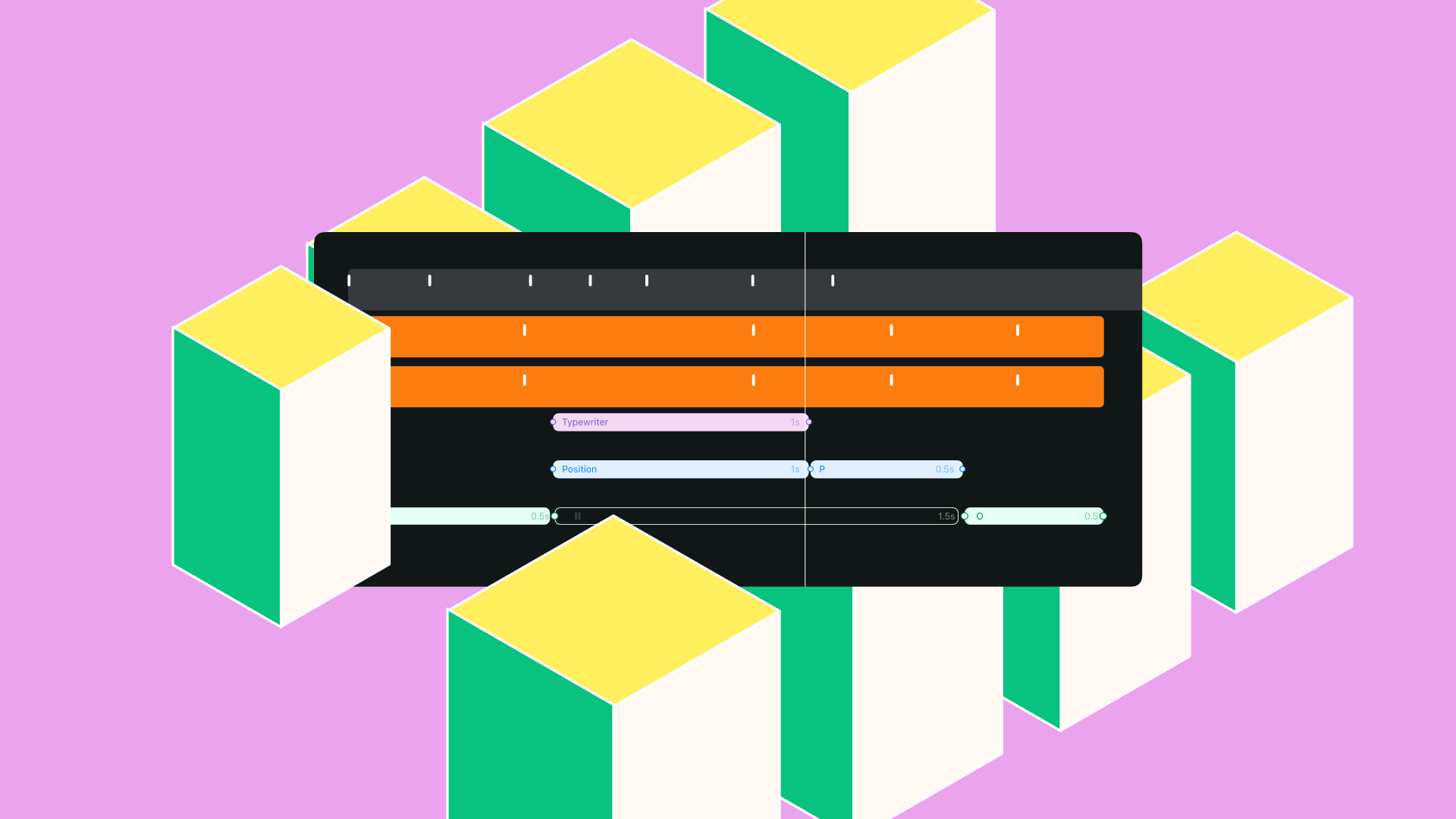
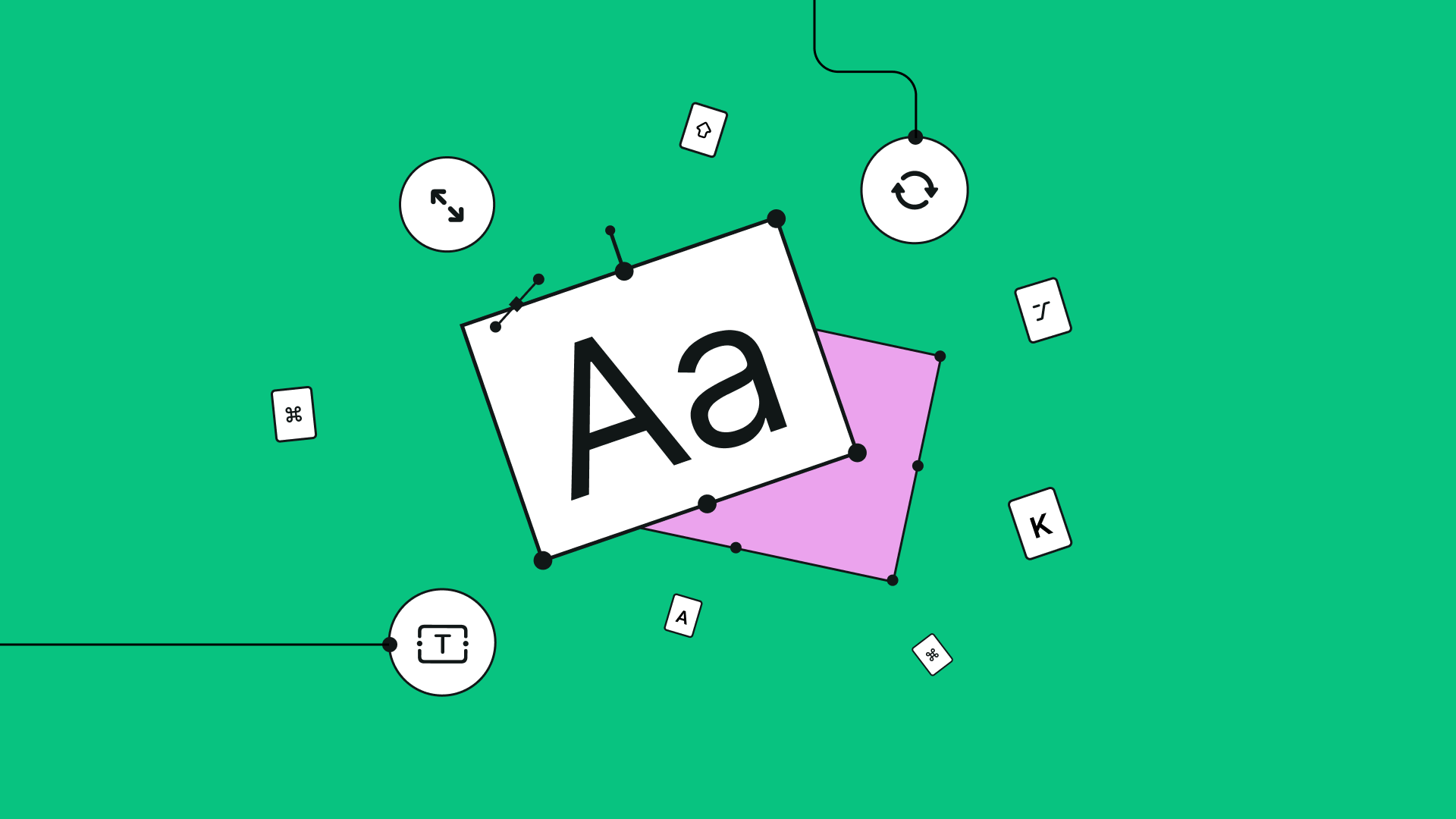
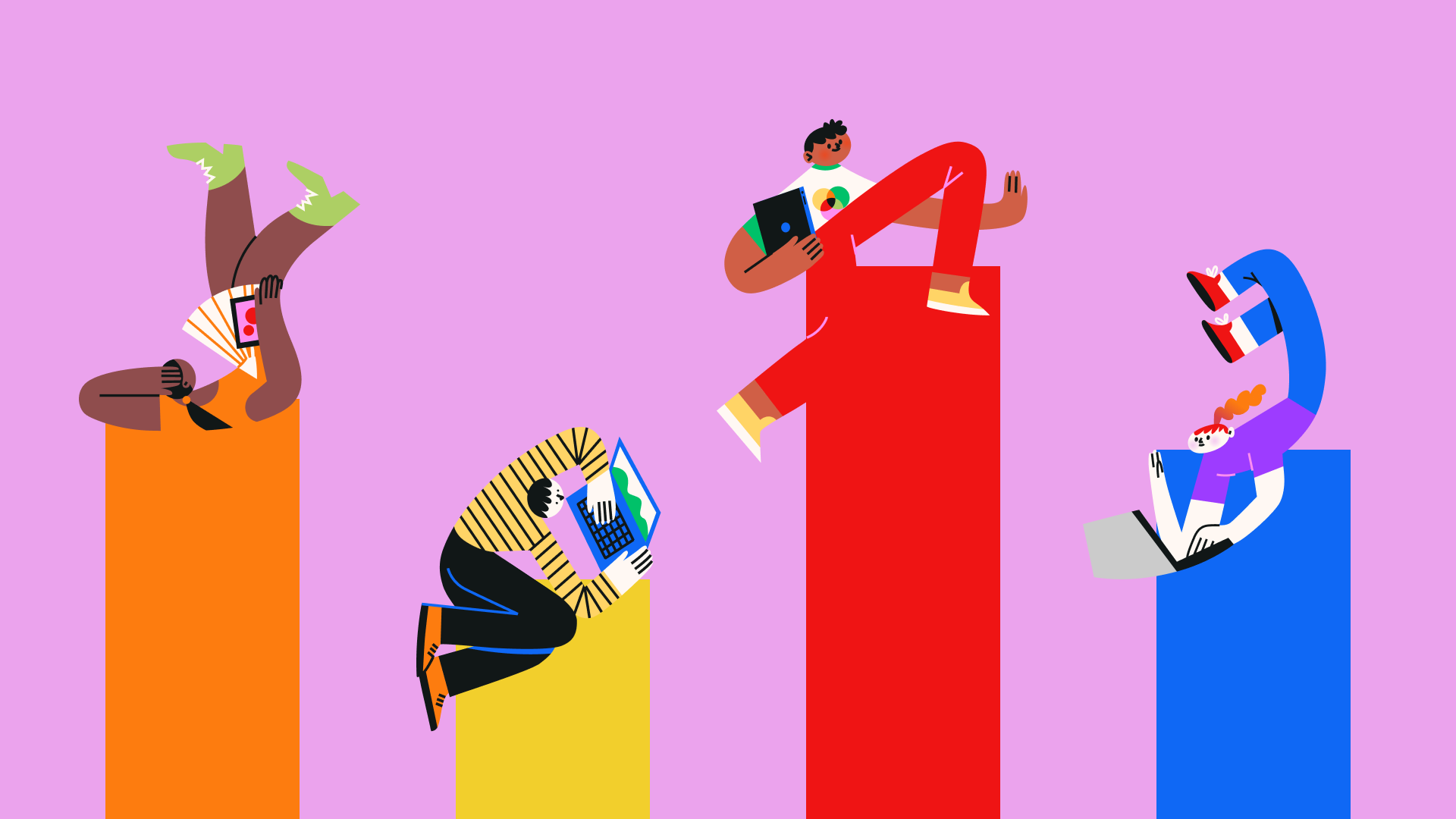
:quality(75))
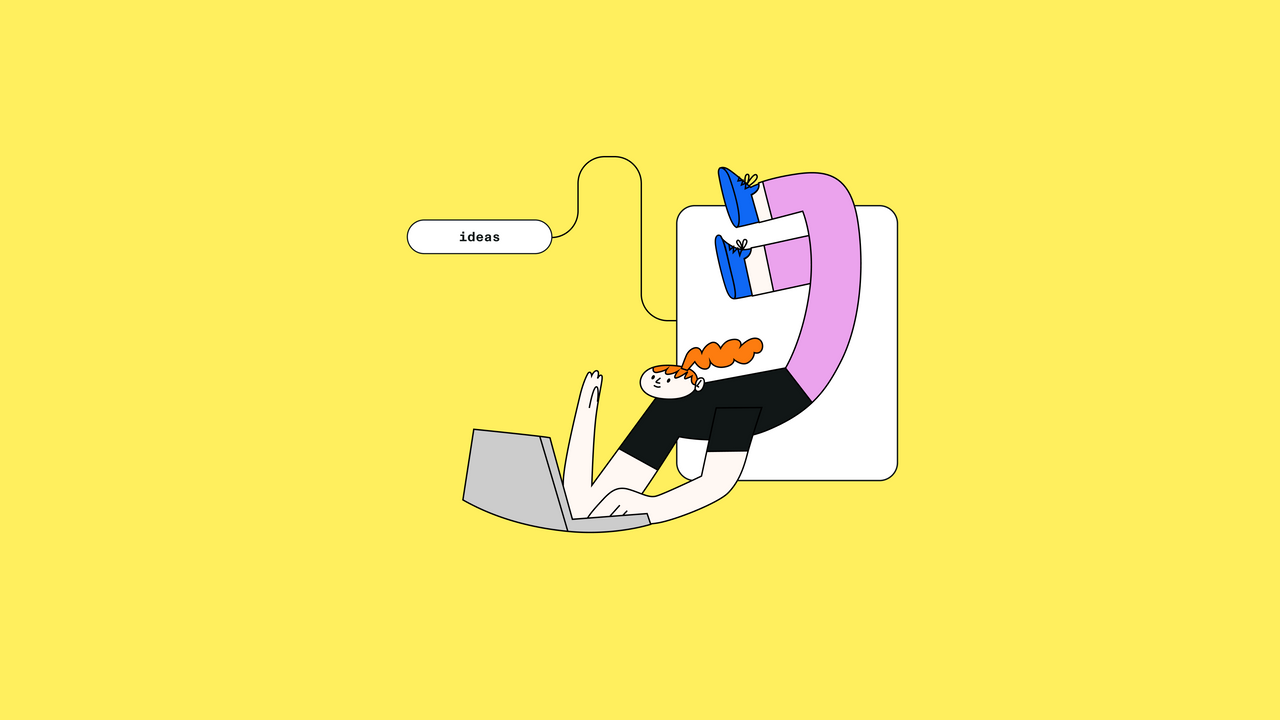
:quality(75))
:quality(75))
